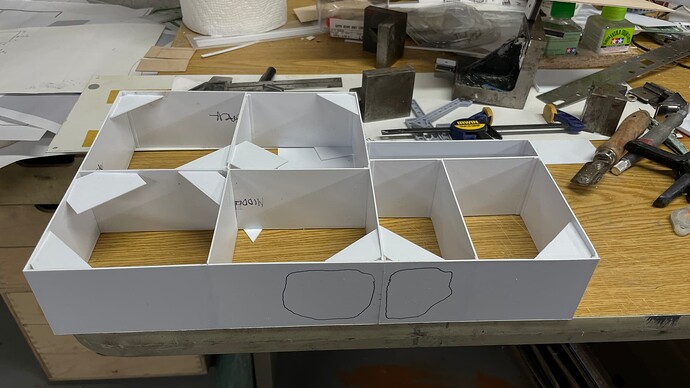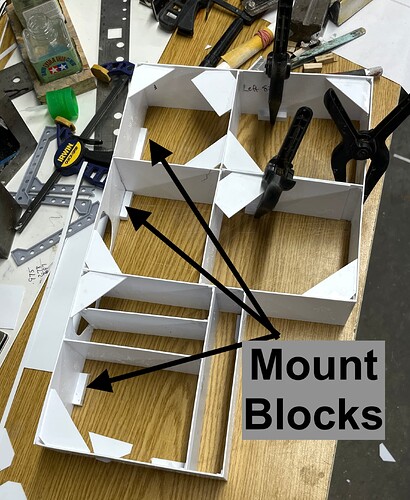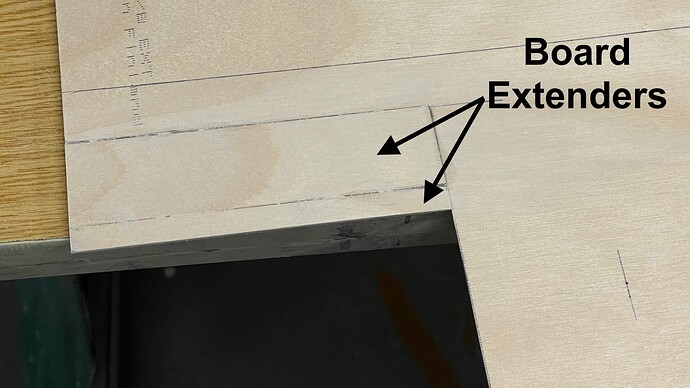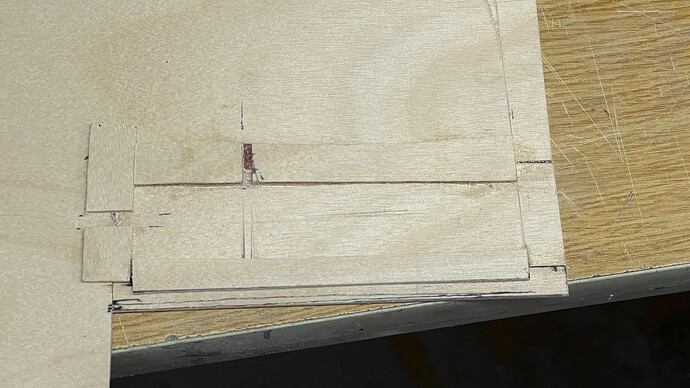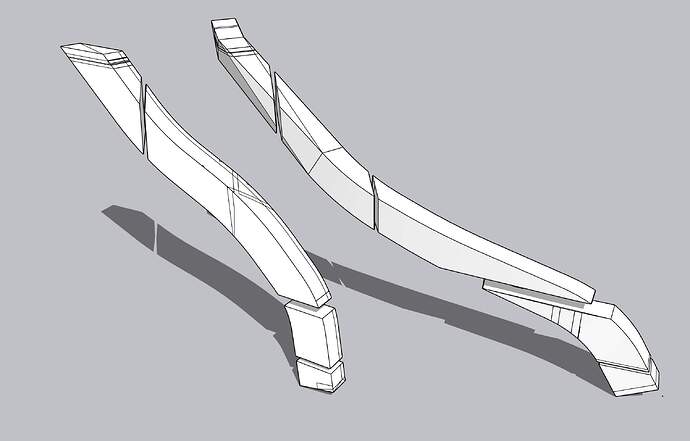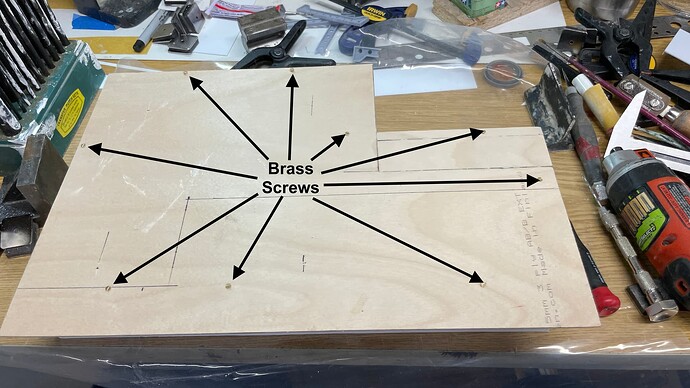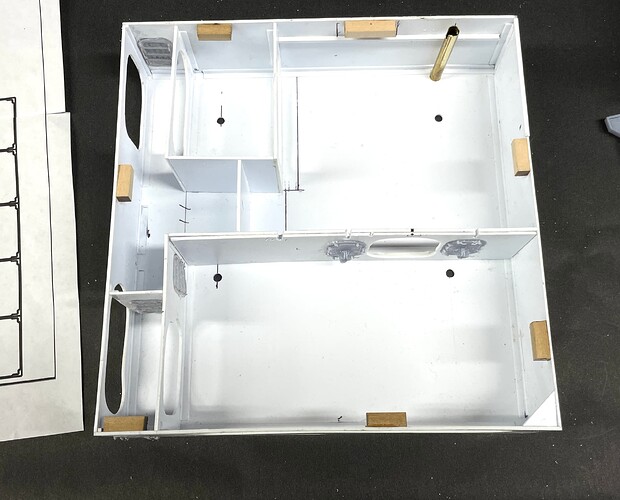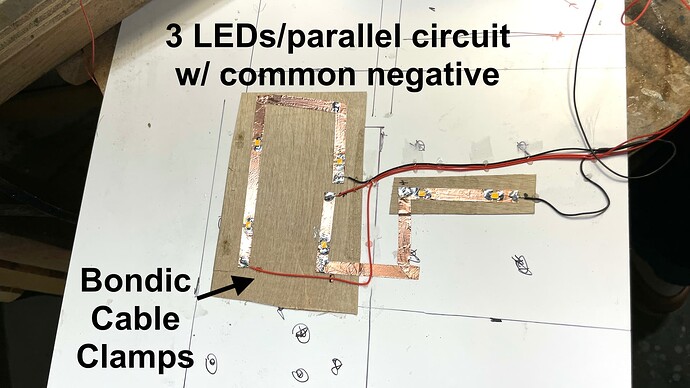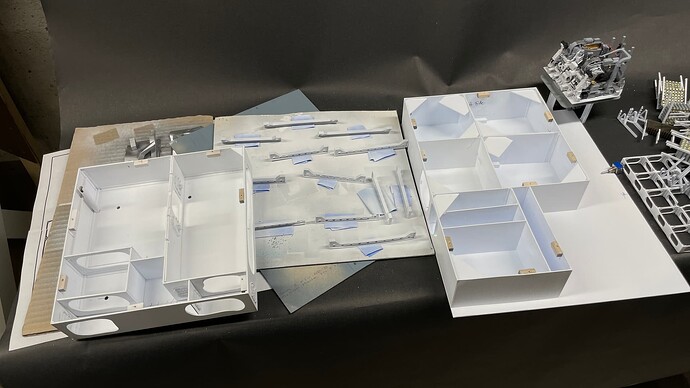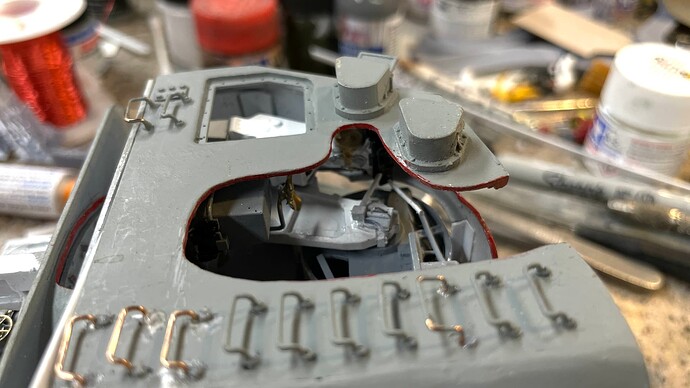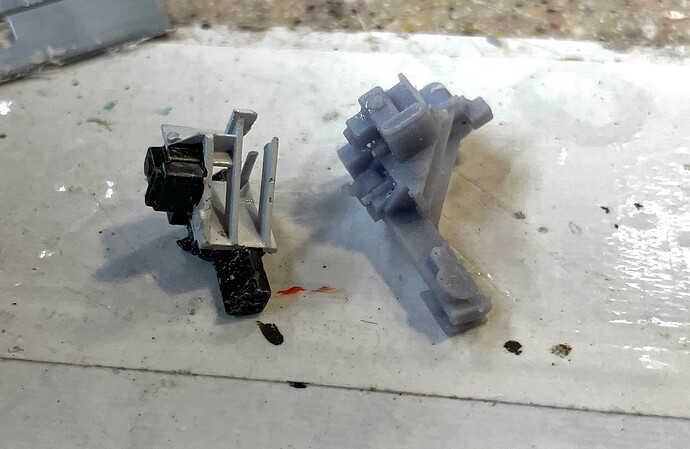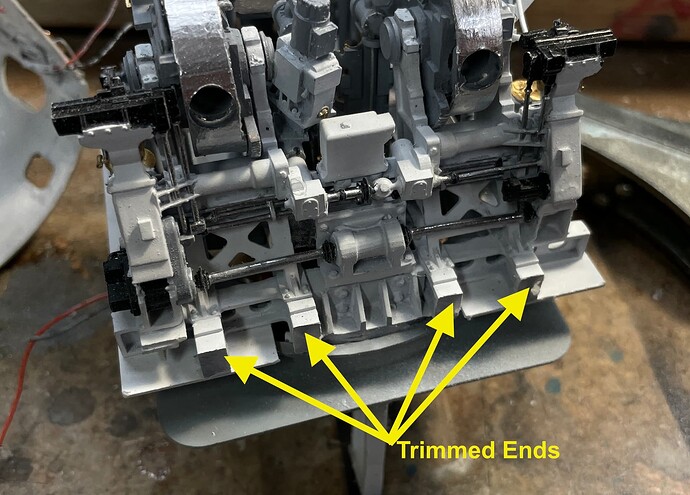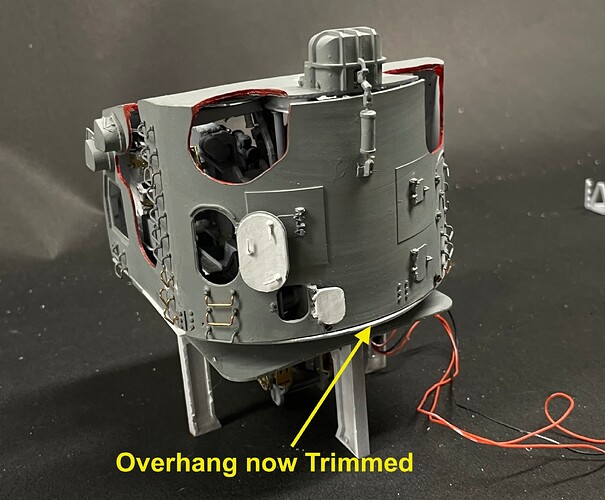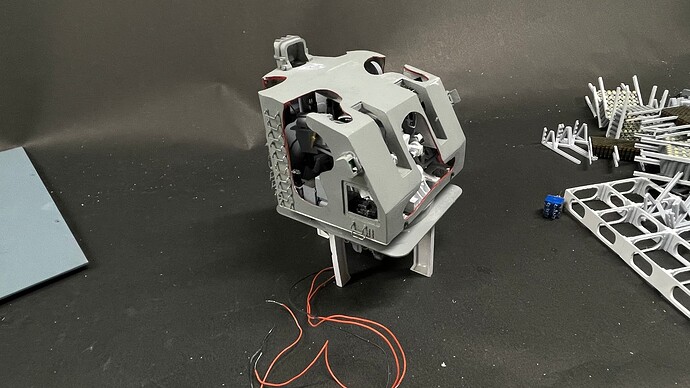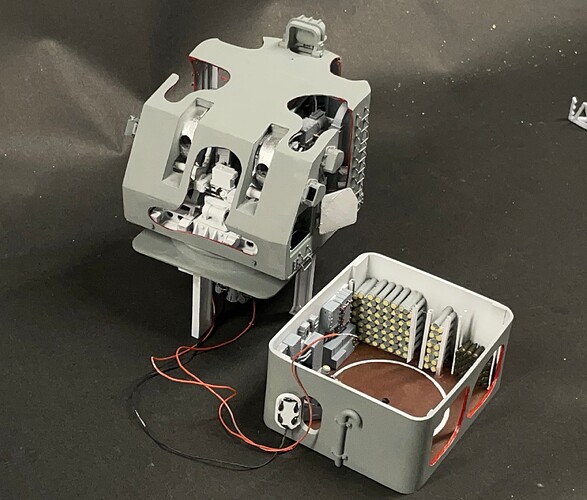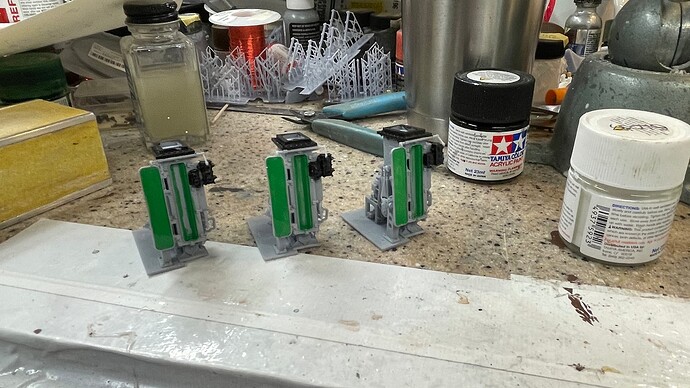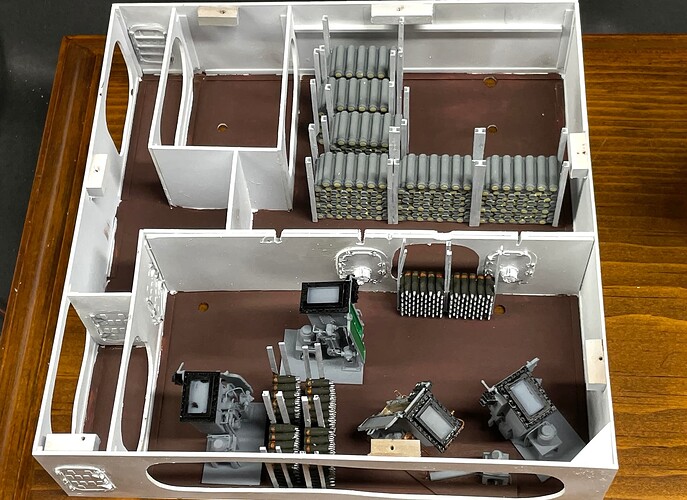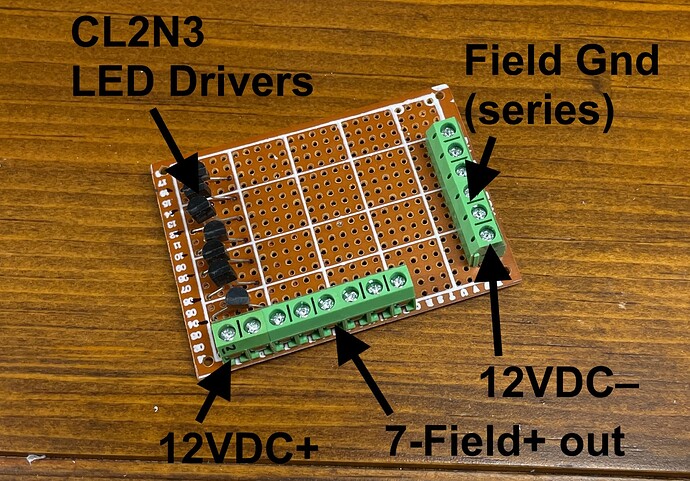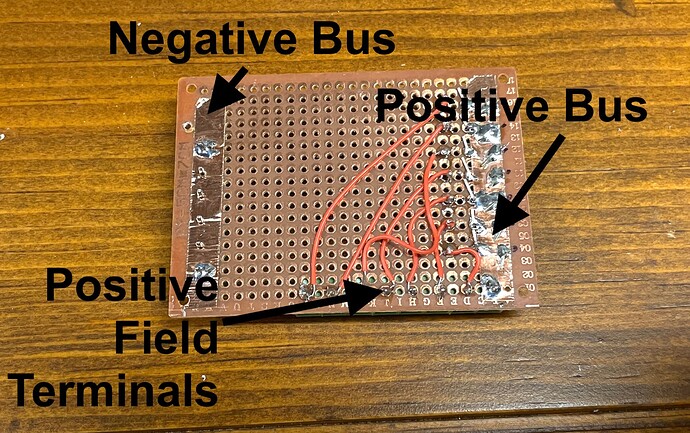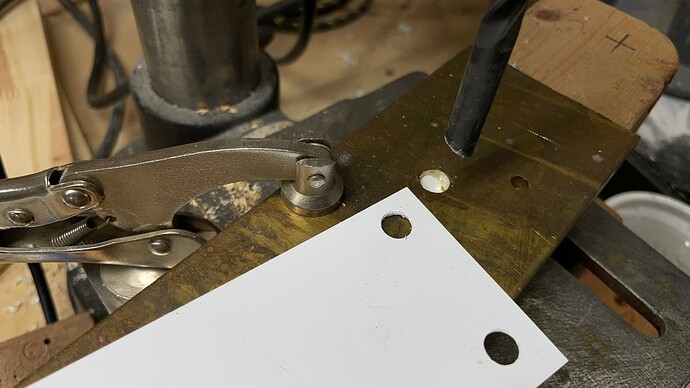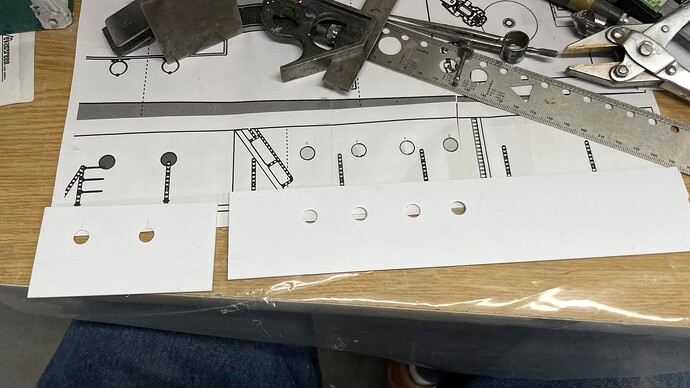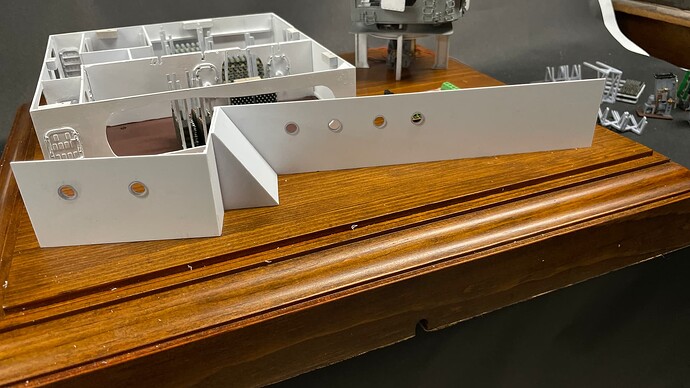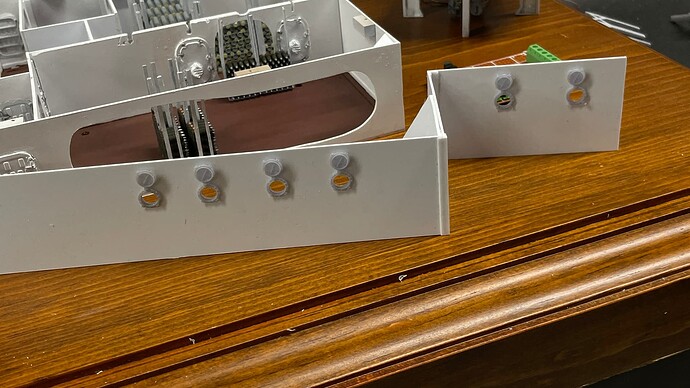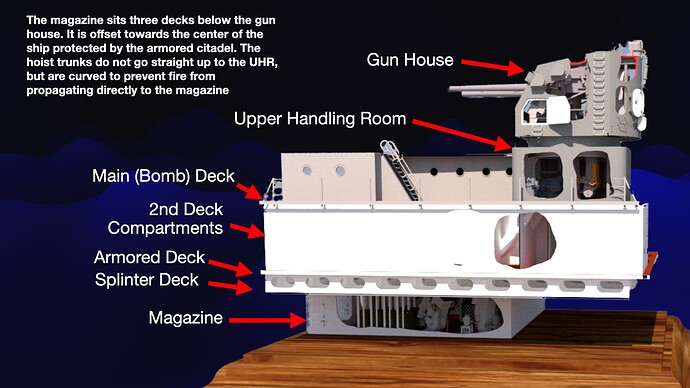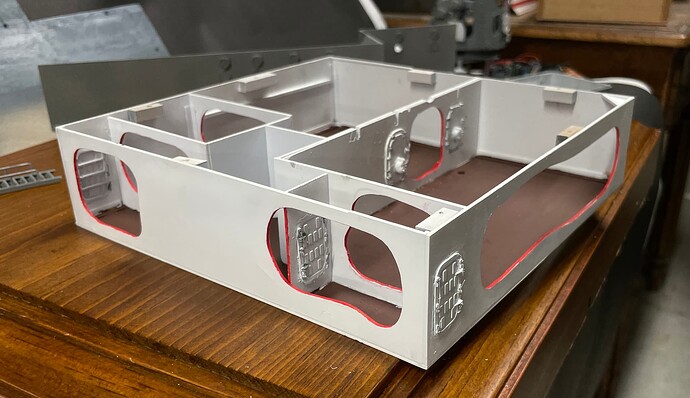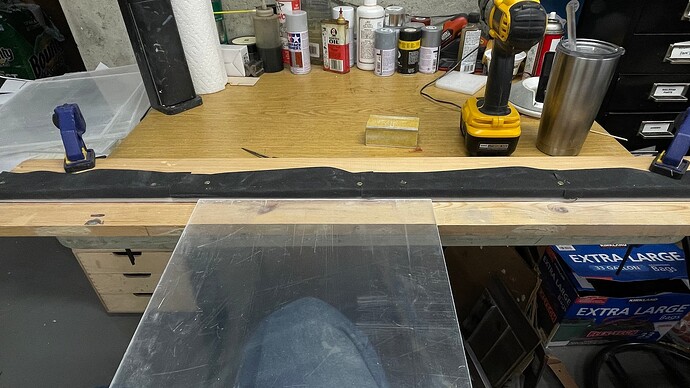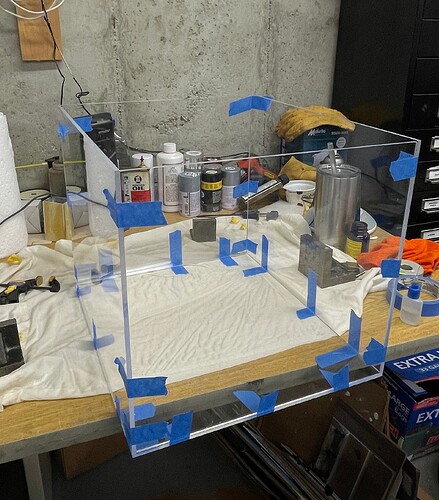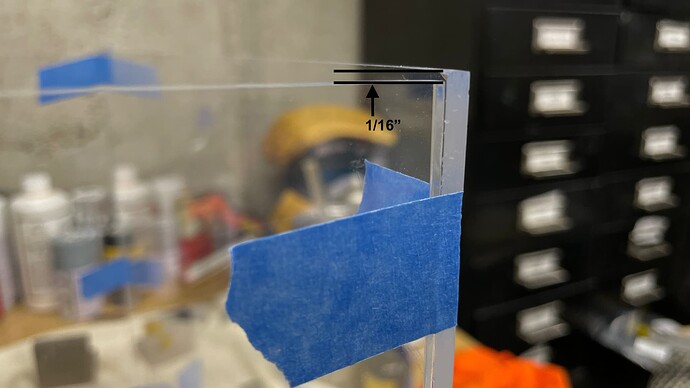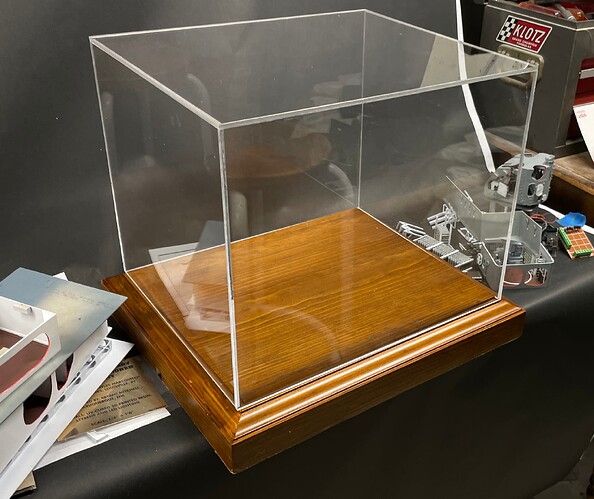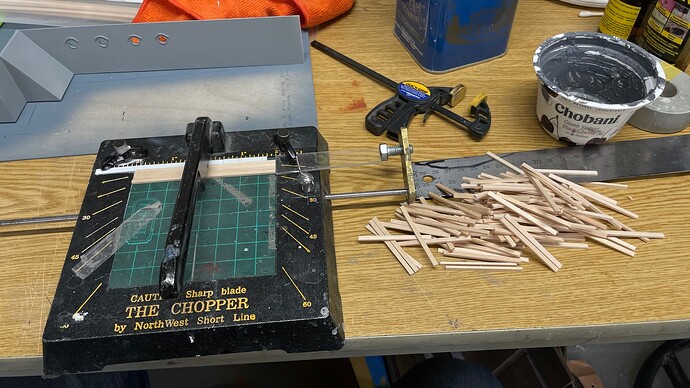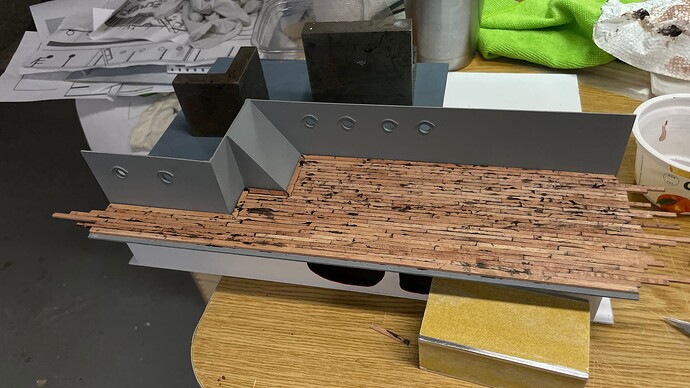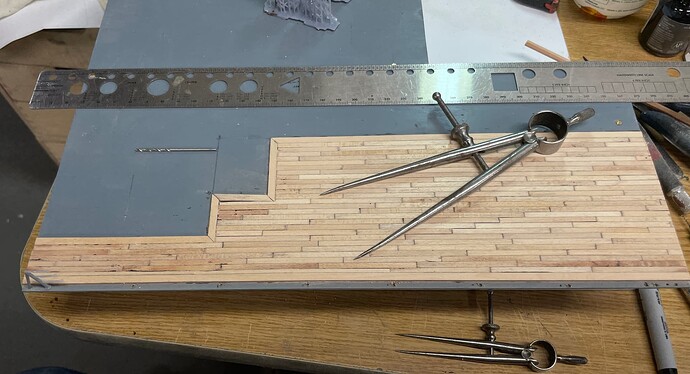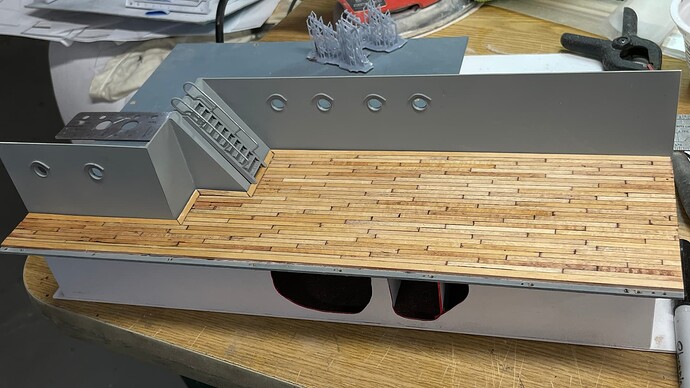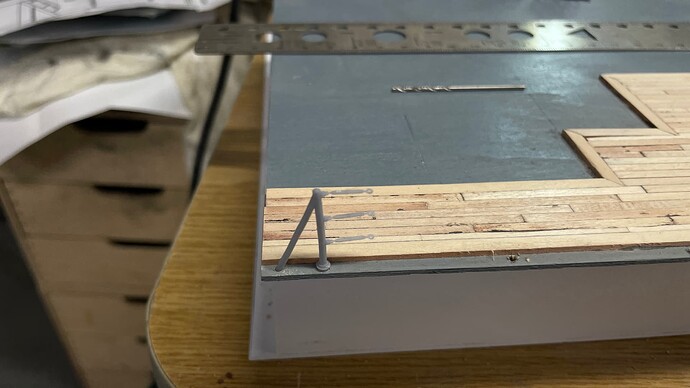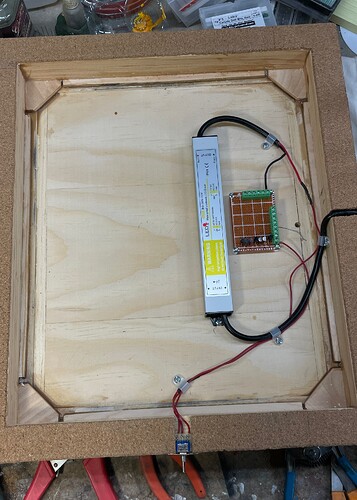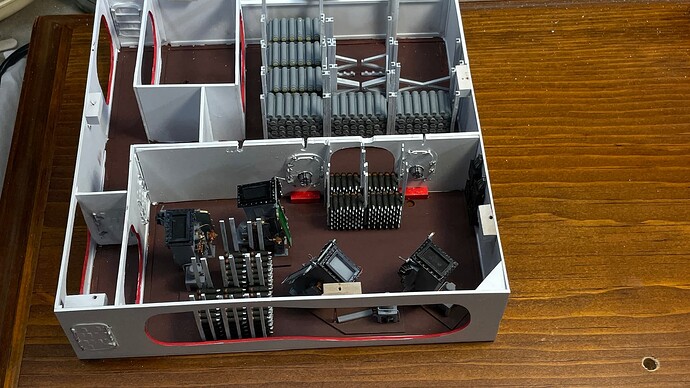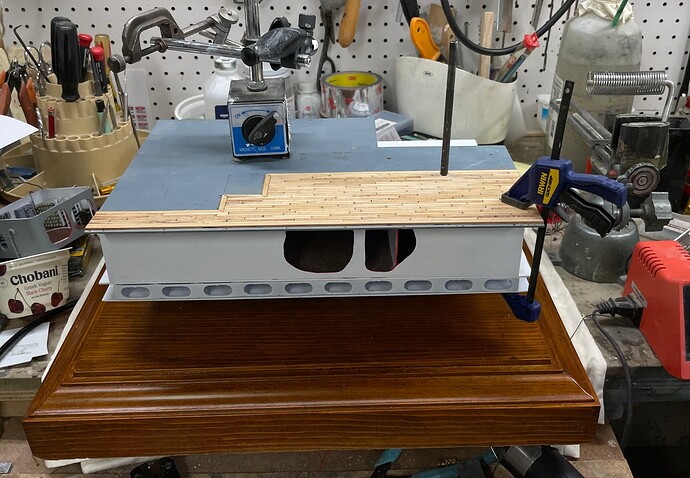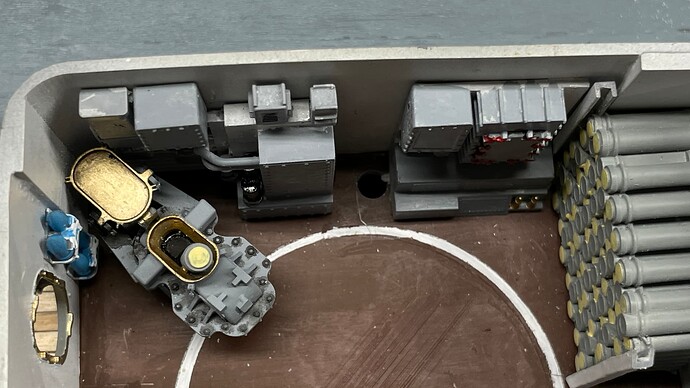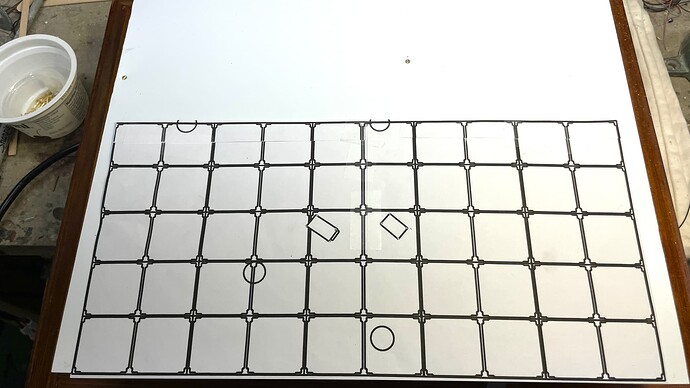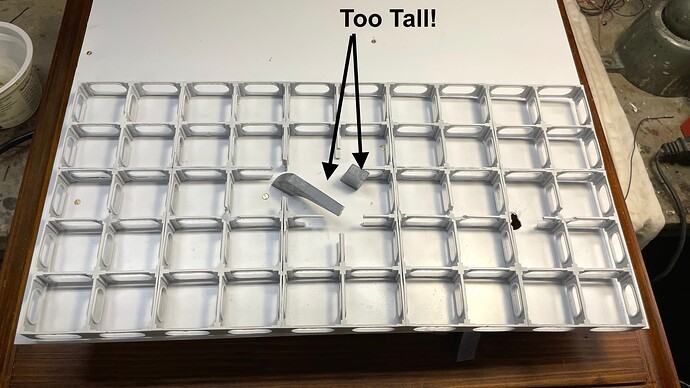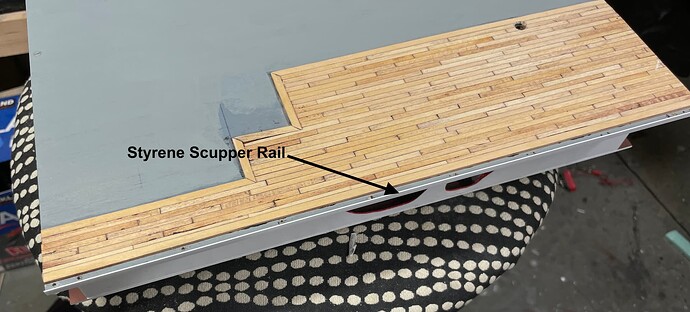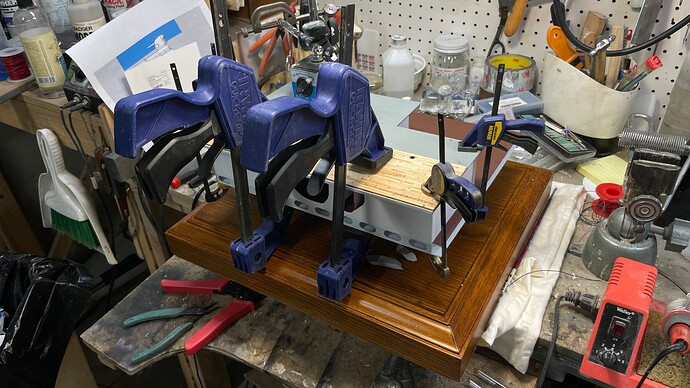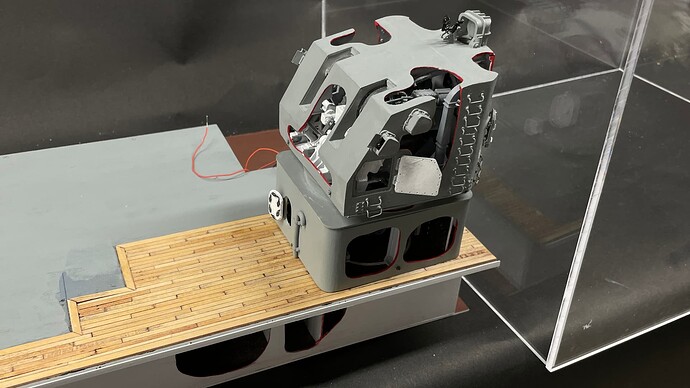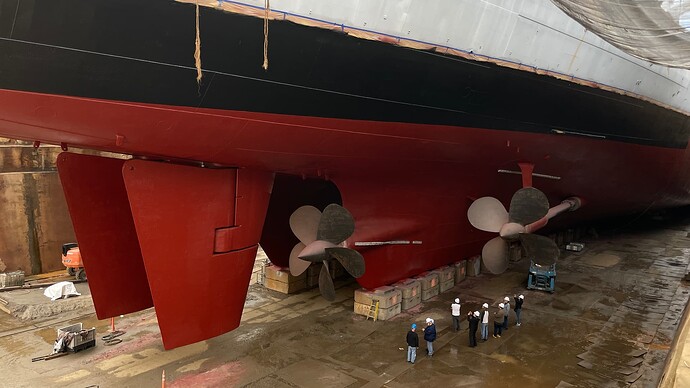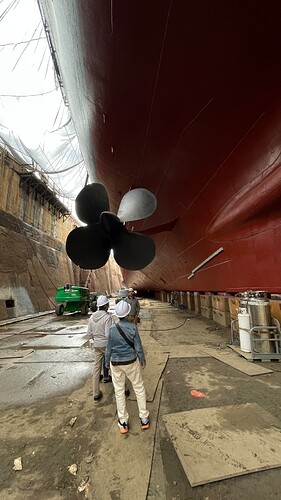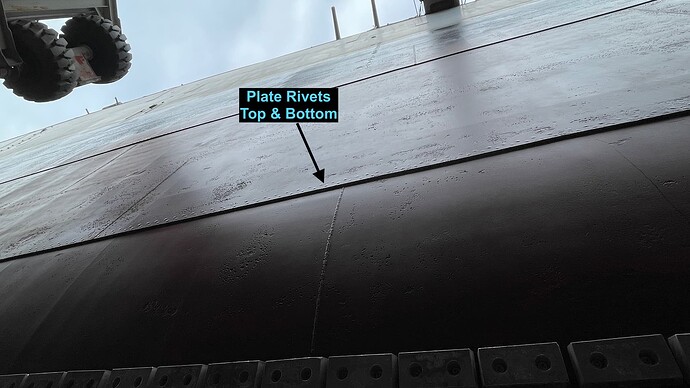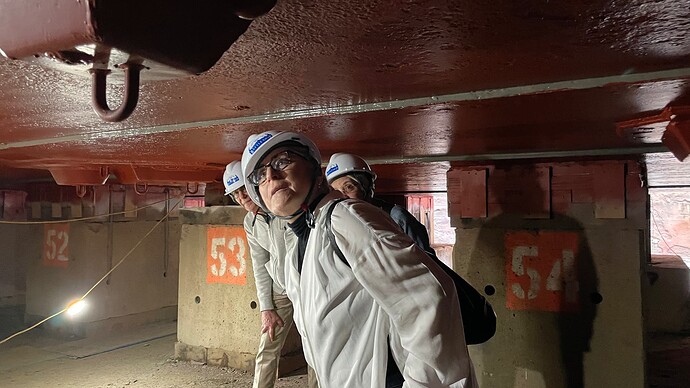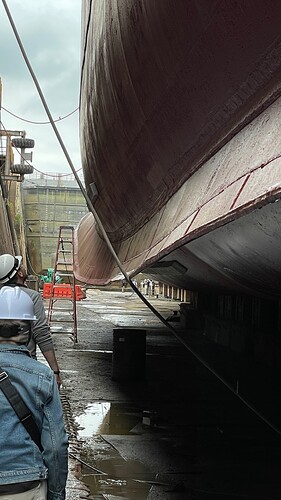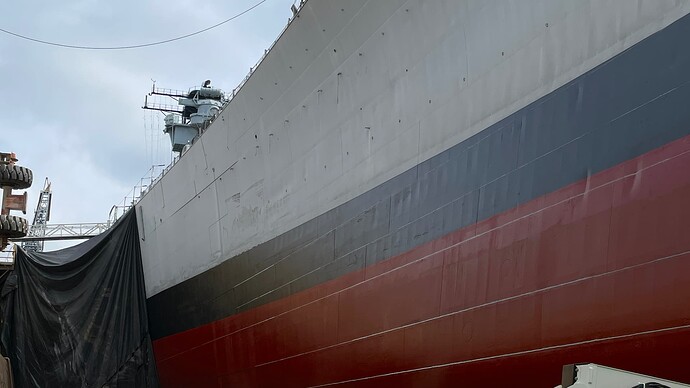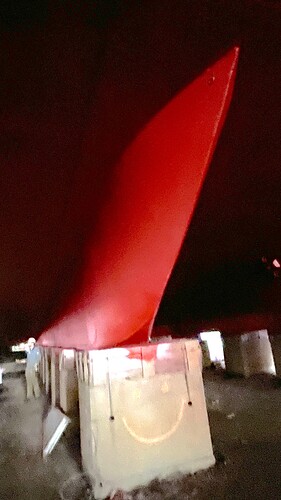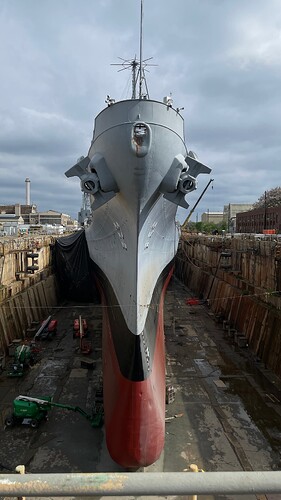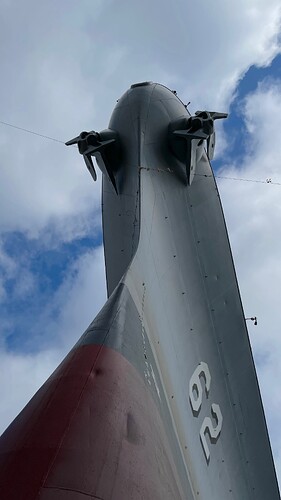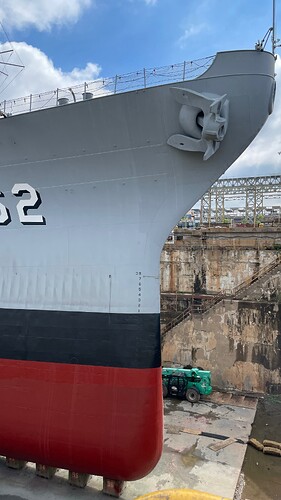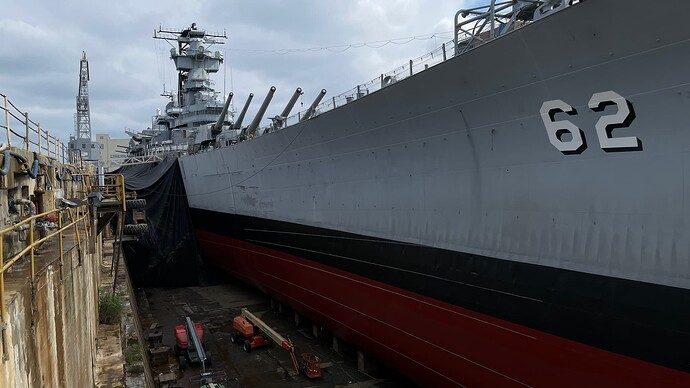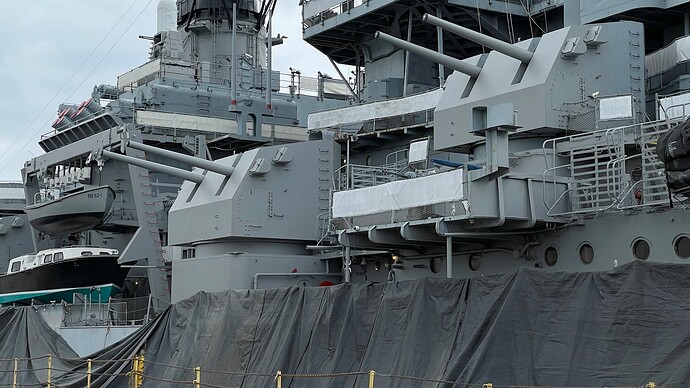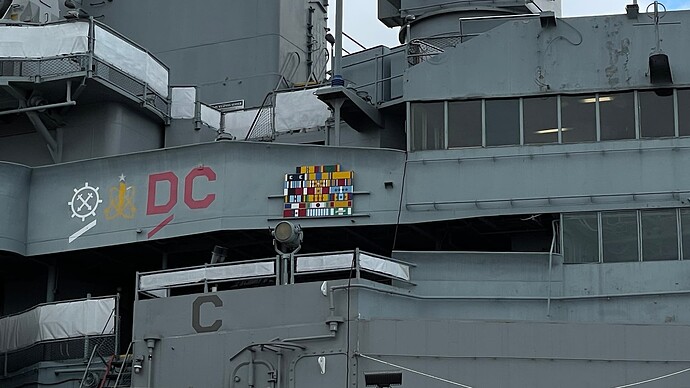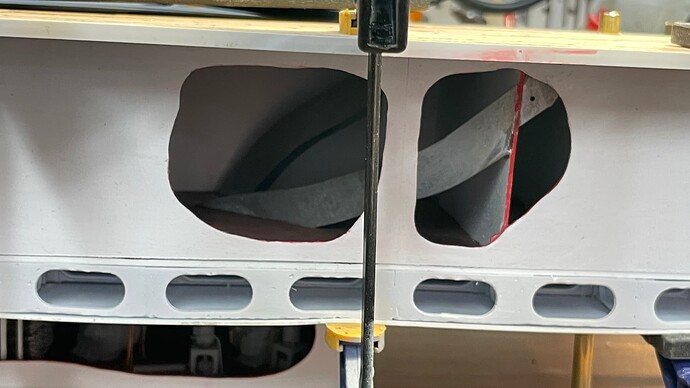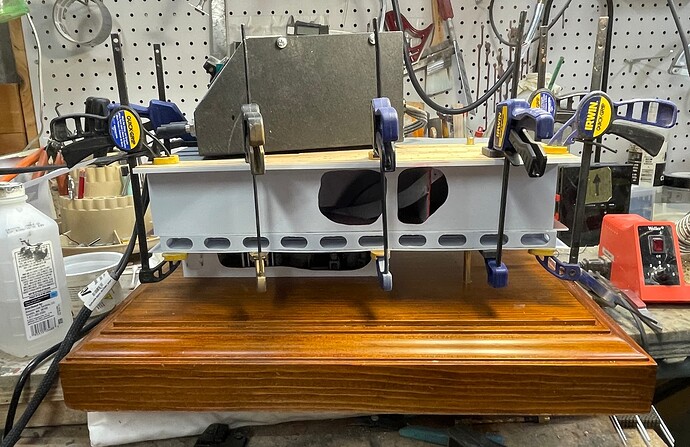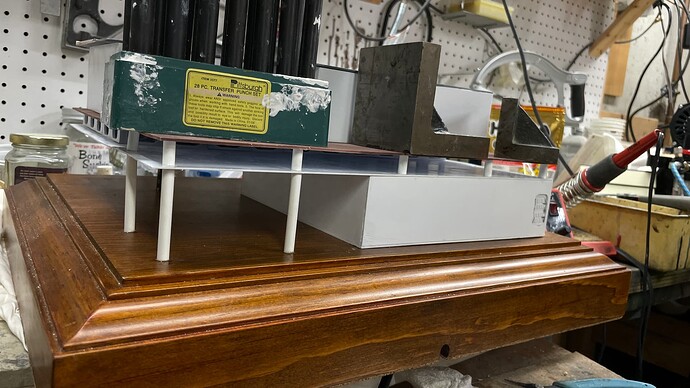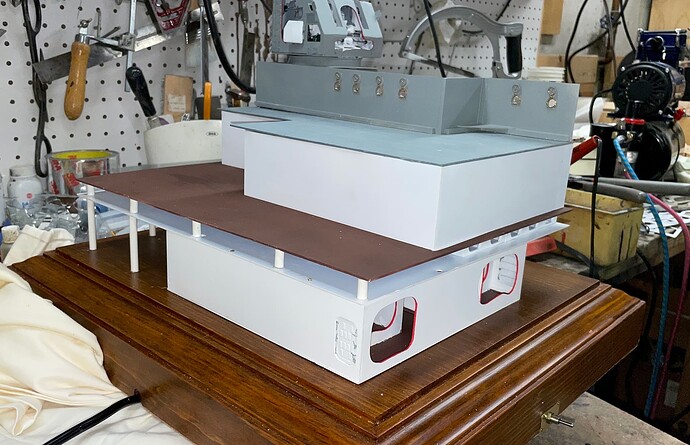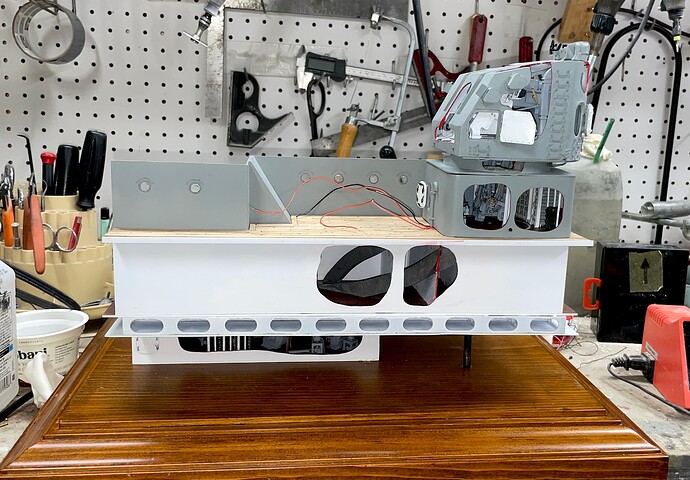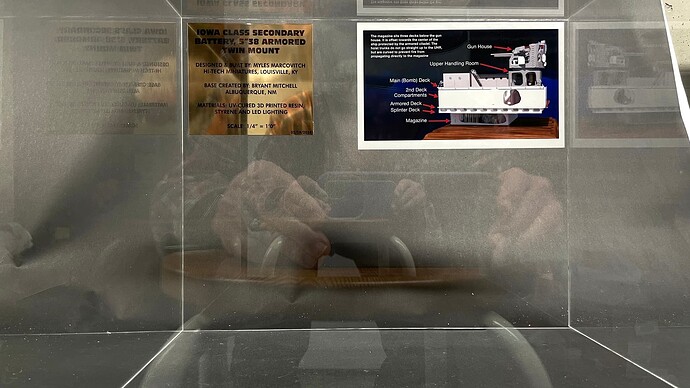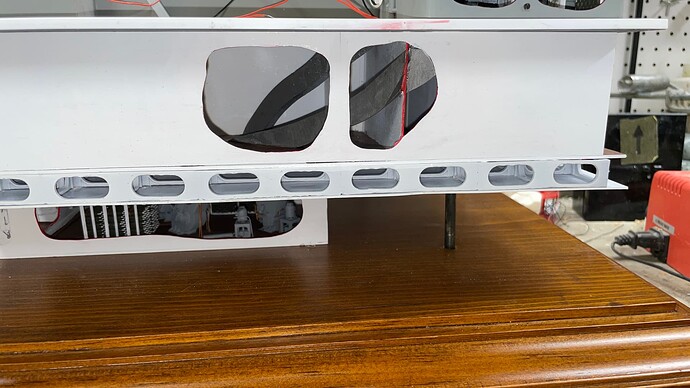Hello gang!
I needed one more day to finish the model, but didn’t do it. I ran into a challenge getting those bits of hoist trunks into the 2nd deck cabin spaces. I was making a mess and had to stop. BUT… we did get that tour and it did not disappoint. My wife, who is anti-military model building and was very luke warm about going on the tour, was blown away. She was quoting Ryan’s comments to others during our Philly visit with friends and family.
The refurbishment project was estimated to cost $10m USD. They were granted $5m from the state of New Jersey, and raised an addtional $4m through donations. While a million short, they started the project. They had a brainstorm to charge for bottom tours. Prices were $1,000//person for Ryan, $500/person for his communications manager and $225 for other docents. It was so successful that to-date they raised another $1.5m and were able to extend the project until mid-June to do some other items that they thought would have to be left undone. Ryan was surprised that they have to beg people to take the $35 in-ship tours, but were booked solid for the $1,000 bottom tours. People are coming from all over the world to see it. Ryan has become somewhat of a celebrity both through the now-100s of videos he produced and getting publicized on CBS World News and the New York Times.
The ship is in the graving dock where it was originally outfitted in 1943. The Big J and Wisconsin were built there. The dry dock is 100 years old and when the Jersey leaves after this project, it’s going to be decommissioned and filled up. It is a casson dock. The wall that keeps out the Delaware River is hollow. It floats. The ship is pushed into position by the tugs, the casson is floated into position and then filled with water. The casson sinks and aligns with the tapered slots on the dock’s sides. When it reaches the bottom, it plugs off the river. The water is pumped out and the ship is sitting on 292, 4’ square concrete blocks with steel shims. At 47,000 tons, each block supports 322,000 pounds.
To accurately position the ship, there are blocks marking the extremes of the ship. They hang a plumb bob from the forepeak and when it’s centered over the block, the ship’s positioned correctly.
To refloat the ship, the water is let into the dock, the casson is pumped out and floated. It’s towed away and the ship is then free to leave.
In order to move the ship under the Walt Whitman Bridge they had to add 500,000 gallons of water (4,000 tons) to lower it deeper in the river to clear the masts. Water was also moved around in the various tanks in the ship to lower it equally on all those 292 blocks. If it contacted one end or the other first, the massive weight would crush that part. It wa a correographed ballet to get it to settle evenly.
Ryan Syzmanski is not only the curator, but also the project lead on the refurbishment.
This is the first time in 34 years that the ship was out of water. The bottom was in remarkedly good shape.
To access the bottom you must negotiate 75 concrete steps from ground level to the bottom. This was daunting to think about, but both my wife and I did it okay. When you descend the steps this is the view. There are stairs at the four corners of the dry dock. You come down at the starboard stern and go back up at the end at the starboard bow.
The inboard 5-bladed propellers are 17’ in diameter. The outboard are 4-bladed 18’ in diameter. The two skegs channel water to the inboard props and the rudders to increase their efficiency.
The channel between the skegs is known as “The Holland Tunnel” due to it’s size. Two cars can pass side-by-side. The outer bearing is held in a massive casting that’s welded to the skegs.
The two massive rudders are single piece, hollow castings. They had to do internal inspections of them to determine if any corrosion was taking place. The are of semi-balanced design to reduce the turning force required for their operation. The hull is repainted with 18,000 pounds of special Sherman Williams anti-fouling red.
The ship is so huge that it’s impossible to ascertain just how big it is standing below it. I was able to visualize how the hull was constructed. The hull plates are lapped over each going up. The upper and lower edges were rivited with semi-flush rivets and fore and aft joints are welded. Modelers who like to acccentuate the plating on 1:350 scale ship models are overdoing it. The ship’s side are quite smooth.
At sea, the ship had 1,600 Zinc galvanic corrosion blocks bolted to the hull to prevent erosion of the properller bronze. The ship’s hull is the negative/ground plane for the vast amount of electrical energy generated within. With the action of saltwater as an electrolyte, the less nobel properllers would give up metal ions to the steel hull. With the zinc, being a less nobel metal than the props, they would be sacrificed saving the properllers.
At least that’s the way it’s supposed to work. Whe the ship’s bottom was exposed, there was no errosion on the zinc blocks. That’s because the ship was not in salt water. It was in brackish water of the lower Delaware River. After analysis, they found that aluminum was the correct metal to use and all 1,600 blocks were replaced. In pure fresh water the metal would be magnesium.
Clearance under the ship is tight and somewhat claustrophobic at four feet. This height was chosen supposedly so the painter’s can sit on a paint bucket while painting the vast bottom. Here was Ryan regaling us on that thought.
We were given hard harts which came in very, very handy when stooping under the vessel.
The ship has 160 sea chests, openings to pass water into and out of the ship for all the various things needing it, e.g., boiler feed, condenser cooling water, drinking water feed to the evaporators, etc. All of these are plugged with welded covers and all had to be inspected for leakage. At sea they would all be open. They penetrate the hull at various angles depending on if the ship’s forward velocity is used to give a ram effect. The Delaware River’s visiblility is about 15" so nothing could be learned while it was in the water. The assessment had to wait until the ship was exposed.
The bilge keel was damaged during some move or another and was fixed by adding welded sheet steel. The welding popped the rivet next to the damage requiring it to be welded, which popped the next rivet and so it went for hundreds of them.
Another thing found when the ship was dry were these welded circles that were close to the bilge turn. They didn’t know what they were for. After investigating, it was determined that during the 1980s refit, the ship was converted from Bunker C oil to distillate (heating oil). Before refilling the tanks, they had to be completely cleaned of all the tarry residue from the heavy oil. The fuel tanks form are the entire bottom of the first layer of the triple-bottomed hull. They cut man-sized holes in the tanks and men with steam lances had to enter to melt and then remove the tar. It was an awful task! They then welded the circles back on. Having fuel at the bottom provided buoyancy control and torpedo defense.
Most of the hull skin is very streamlined with minimum ripples. There is some erosion that’s visible under the fresh coat of paint, but all in all the ship looks fabulous for being 81 years old.
There’s a minimum amount of ‘oil-canning’ around the areas with the lightest plating, namely the bow and stern. It’s most pronounced on the black boot topping. The sun’s heat expands the steel, but it’s constrained by the framing. The only place the thin steel can go is to buckle slightly. Modelers who want to add this detail need to consider it’s only at certain areas of the hull, not the whole ship.
Where the ship is sitting on the blocks it can’t be painted. To accomodate this when on active duty, the ship is drydocked every two years for a bottom paint. It’s positioned in three ways. The 2nd and 3rd positions are two and four feet off the original position, so they can paint the area that was blocked initially. However, from WW2 to the last deploy, the ship was only activated for a year at a time, and each time they painted it, they used position 1, meaning there were 292, 4ft square areas on the bottom that hadn’t been painted in 75 years. To fix this problem, the ship will be re-floated and moved 4ft forward and set back on the blocks in the new position exposing the unpainted areas. This little move will cost over $100,000.00.
There is one detail that is never included on models of the Iowas. Between the skegs is the tail of the actual keel of the ship. It’s rather pronounced and ends in a very sharp knife edge, mirroring that of the bow. It’s buried in the Holland Tunnel and when you see side elevations, they don’t show it. Even mid-line section drawings don’t show it and NO MODELs have it, but there it is.
It is not shown on this section drawing.
When we got up those steps we walked out on the catwalk atop the casson and I took this shot straight onto the bow. From this view the ship is all about speed.
From the stern the ship is all power; 212,000 hp to move 57,000 tons at 35 knots in sea trials.
Looking up at the bow you realize how tall the hull is. Due to it’s massive displacement and fine lines, the ship draws 36 feet of water.
The bow’s profile is gorgeous!
The first two Iowas (Iowa and NJ) didn’t sit with the main deck parallel to the ocean surface. The bow was 8 feet higher than the stern and the water line refected this. The last two; Missouri and Wisconsin, had 5,000 tons of armor added to turret #1’s barbette and these two ships sit level. If you’re modeling the NJ you should consider this difference.
Here’s a look down the length from the casson.
Without 10,000 tons of ammo, fuel and stores, the ship’s waterline is 8 feet lower than it would be in active duty.
I also took some detail shots of the secondary battery I’m modeling to capture any other external details that I want to add.
The Big J was the most decorated warship in the US Navy due to its many deployments. It has battle stripes just like an individual sailor would have.
We had a private tour with Ryan that lasted 1.5 hours. It was remarkable and I’m so very glad to have been able to do it.
